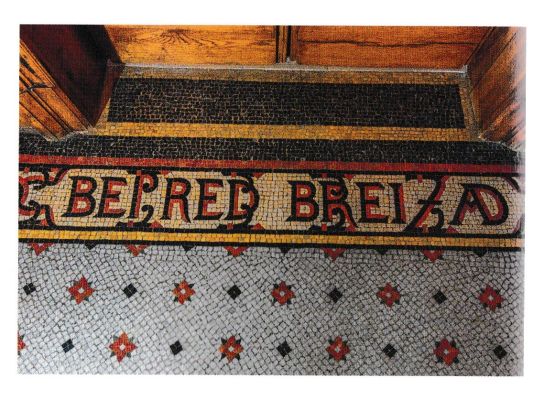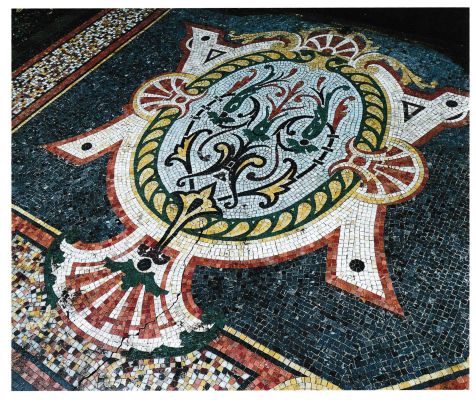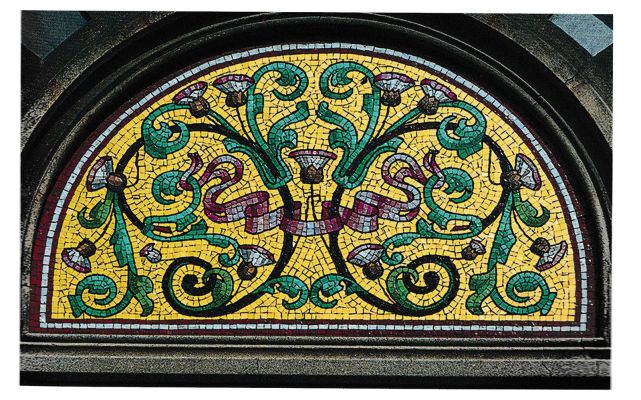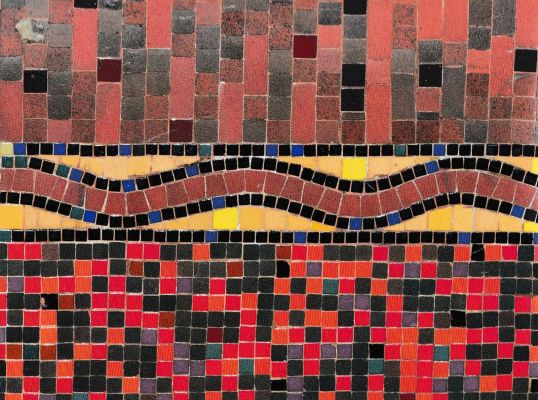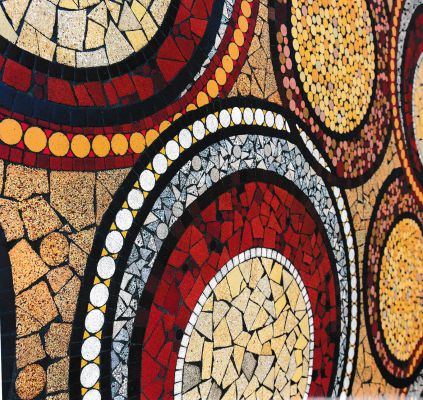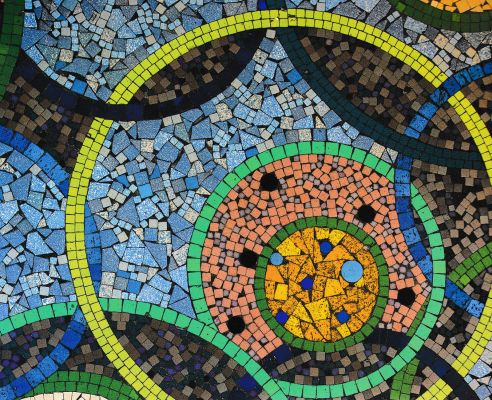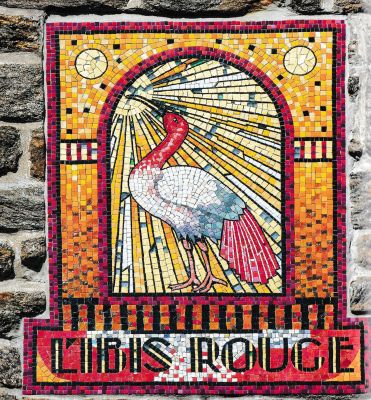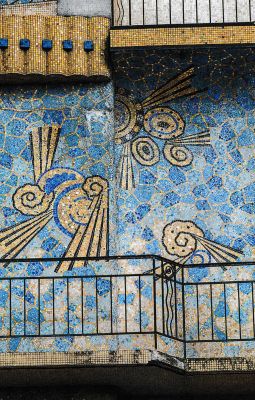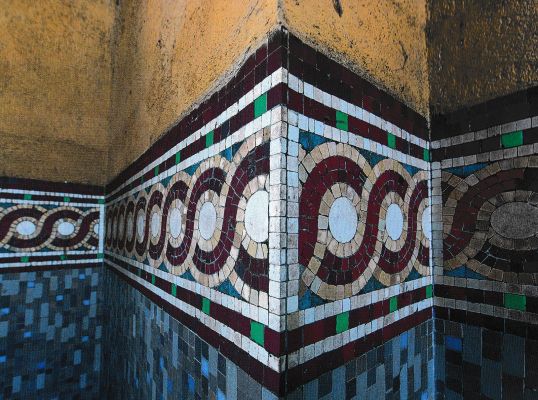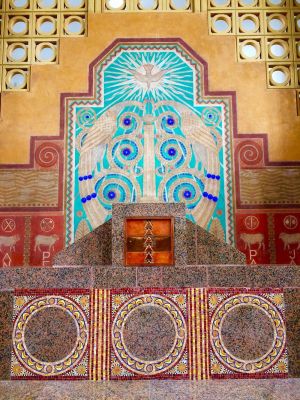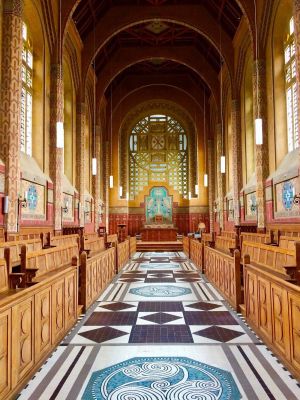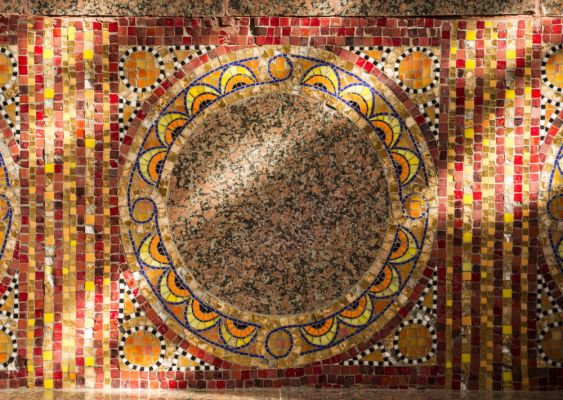the ODORICOs, mosaic artists who came to Brittany from Ital

The mosaic technique
Mosaic is a decorative art in which “tesserae” – fragments of stone, enamel, glass or ceramic – are assembled with putty or plaster to form patterns.
Widely used in Antiquity and the Middle Ages, particularly by the Byzantines and Italians, this technique had fallen almost into oblivion in France until Charles Garnier revived it for the decoration of his opera house, inaugurated in 1875.
He commissioned Italian mosaicist Gian Domenico Faccina to create the opera Garnier’s marvelous polychrome mosaics, including the Byzantine-inspired floors and vaults of the forecourt.
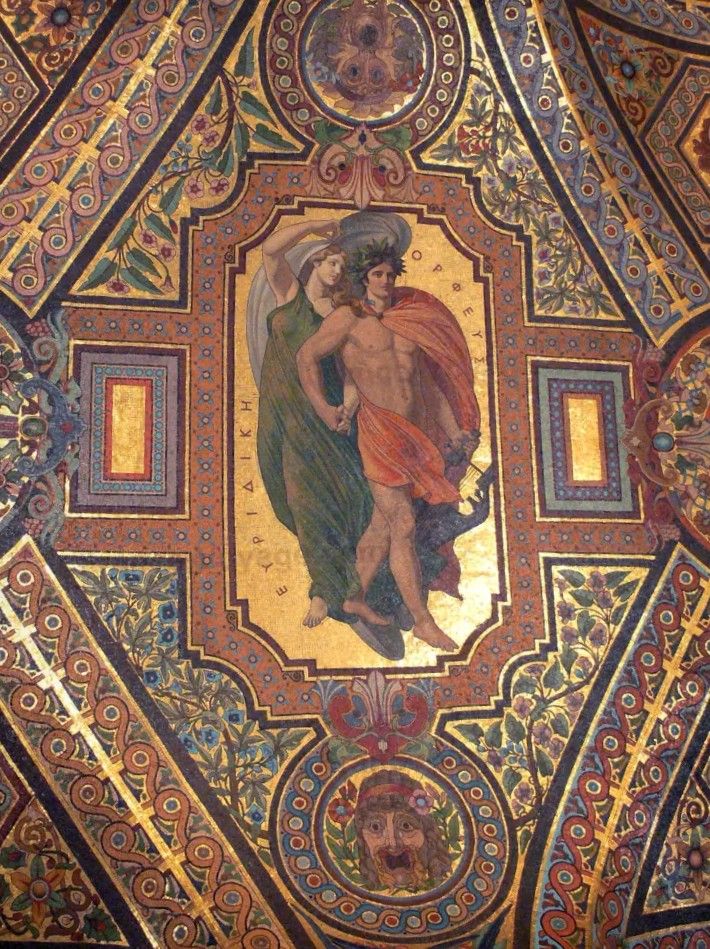
Mosaïque opéra Garnier
From the end of the 19th century onwards, mosaics enjoyed great success throughout France, thanks to their decorative qualities and durability. They were produced mainly by Italian craftsmen from the province of Friuli, near Venice and Ravenna, where an ancient tradition of paving and mosaics had been handed down from generation to generation over the centuries.
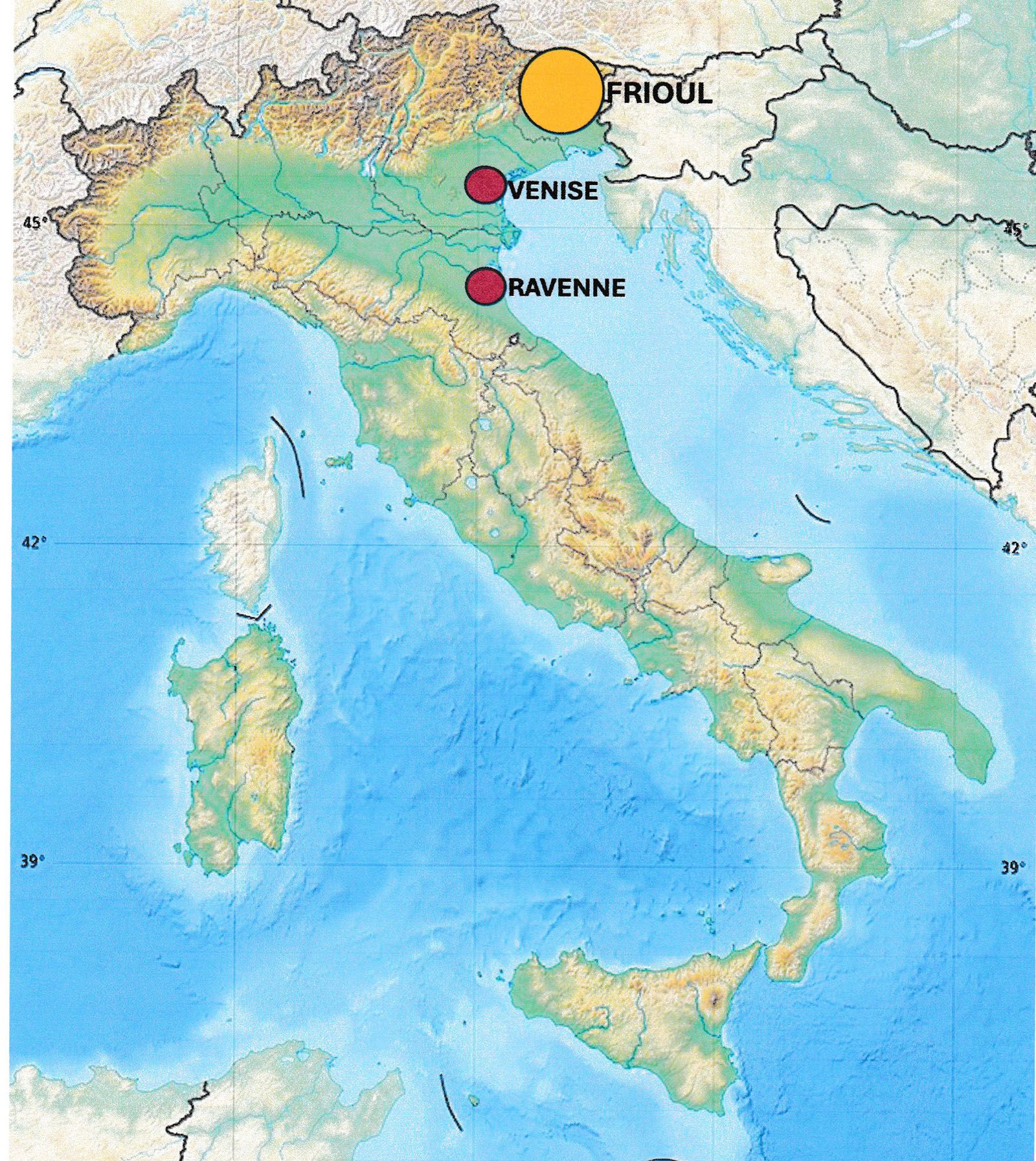
The Friulians had developed a particular technique used by Faccina, called “reverse laying”. Instead of laying the mosaics directly, i.e. inserting the tesserae one by one into the mortar, they prepared the different panels in the workshop. The decoration was drawn life-size on heavy paper, and the tesserae were glued to the paper in reverse. The various parts of the decor thus prepared in the workshop were transported to the site, where another team assembled them in fresh mortar. Once the mortar was dry, the paper was removed and the decoration appeared right-side-up… Thanks to this technique, the Friulians were able to considerably reduce the time and cost of creating mosaics – one of the reasons for their success!

La pose à revers
Isodore Odorico “father” 1845-1912: from Friuli to Brittany
Isodore Odorico “father” and his brother Vincent, mosaic artists from Friuli, arrived in France with Gian Domenico Faccina’s team to help create the decor for the Garnier opera house.
On completion of the project, they decided to remain in France, first in Tours and then in Rennes, where they set up their own business in 1882. Rennes was growing, particularly around the new railway station district. Working with architects and cement manufacturers, the two brothers successfully offered their customers mosaic decorations in the Venetian or Roman style, as well as paving perfectly suited to public spaces, stairwells and building entrances, “doormats” and facade decorations for buildings and businesses, which still adorn the city of Rennes and many other Breton towns such as Saint Malo and Dinard. They also created decorations for numerous private mansions, as well as for churches: choir floors and altar steps.
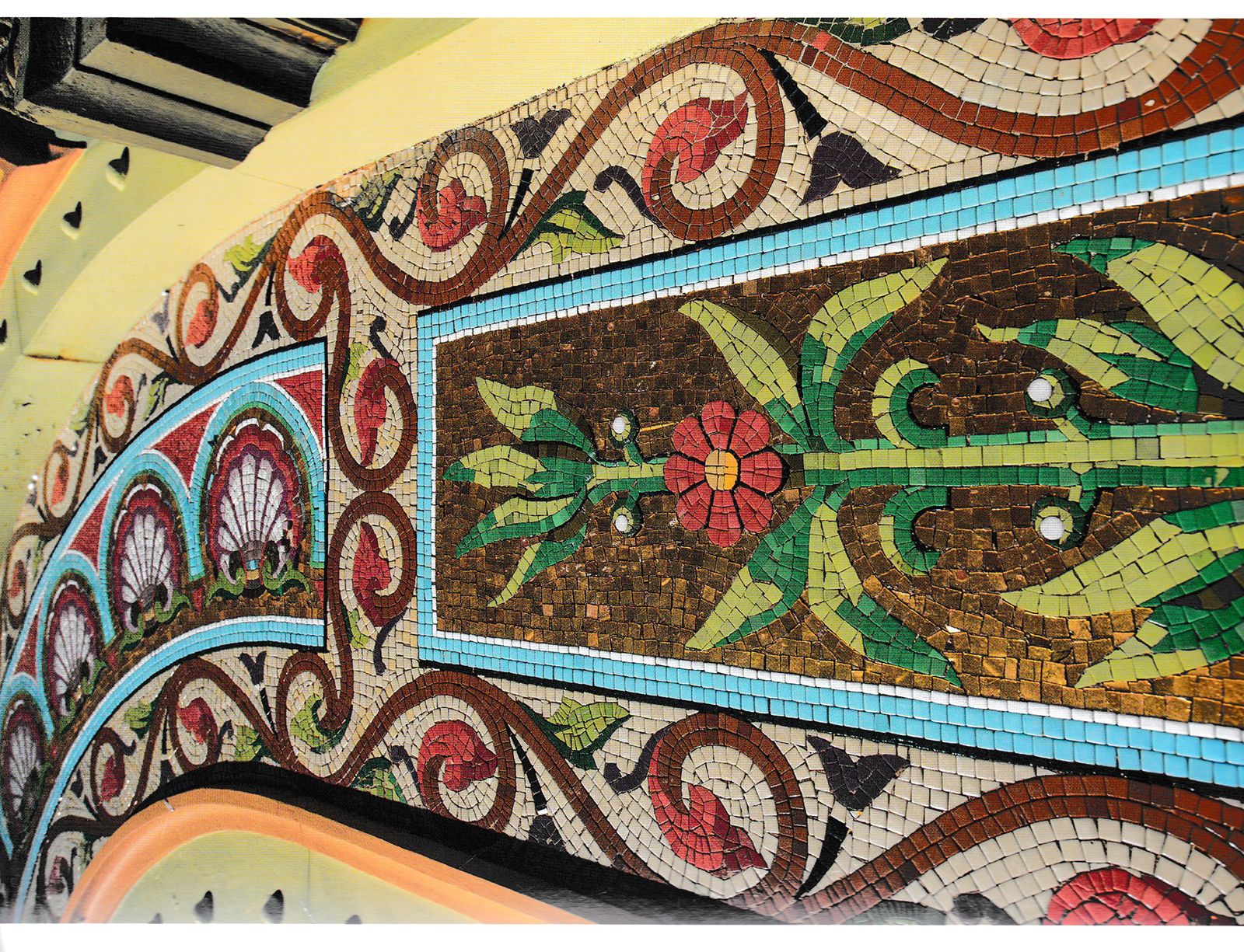
While their decorations remained fairly classical, either geometric or floral, their workmanship was of exceptional quality and craftsmanship.
Some of the finest examples include the Loyer bank in the Hôtel de Farcy in Rennes, and above all the Villa Kermor in Saint-Quay-Portrieux, where Isidore Odorico père composed his most accomplished set of decorations around 1909.
Admire this hallway, entirely composed of white, green, blue-grey, ochre and black marble. The floor is covered with a large geometric composition of four-lobed fleurons.
In the other rooms and corridors, the more sober décor gives pride of place to the privileged view.

Banque Loyer à Rennes

Hall d’entrée de la Villa Kermor – Saint-Quay-Portrieux
Isidore odorico “son” (1893-1945): towards the Art-deco style
Isidore Odorico “son” was born in Rennes. From an early age, accompanying his father and uncle, he acquired their techniques. At the end of the First World War, after completing his training at the Ecole des Beaux-Arts in Rennes, he took over the family studio with his brother, named Vincent after his uncle.
Until his death in 1934, Vincent managed the business and Isidore the artistic and technical aspects. Isidore then became sole owner.
Strongly influenced by the work of the Viennese Secession and the pictorial currents of his time, he adapted mosaic technique to the Art Deco style and succeeded in imposing his personal style.
Considering mosaics to be an integral part of architecture, he diversified his materials, choosing them according to the surface to be covered: marble, porcelain stoneware and hard stone for floors, glass paste, enamel, gold and silver smalt for walls. Its original and unique decors, often very colorful, combining geometric figures and plant or animal elements, appeal to customers in search of novelty. Easy to clean, mosaics also meet new hygiene standards.
Orders poured in, the company expanded, opening branches in other western towns and becoming one of the largest in northwestern France. Work organization is extremely rigorous. Isodore Odorico is considered the leading mosaicist in western France.
He was associated with numerous artists and architects, contractors and local councillors, and won both public and private commissions.
– Public commissions: post offices, station lobbies, swimming pool basins, shower baths, fountains, university campuses, nurseries, hospitals…
– Private commissions for businesses and buildings: facades and pediments of businesses and buildings, entrance halls, facades and interiors of shops…
– Church decorations, such as the mosaics in the chapel of the Maison diocésaine Saint-Yves in Saint-Brieuc, a former major seminary built in 1927.
– As well as exceptional creations for private residences, often with remarkable bathroom decorations.
Mobilized during the Second World War, Isidore Odorico returned weakened in 1944 and died in 1945, aged 52.
After his death, the business continued until 1978, but fashion had changed and the time of splendor had passed.
Nearby, in Etables sur Mer, the villa Le Caruhel, built around 1913 and enlarged in 1920, is decorated with ironwork by Edgar Brandt and Raymond Subes and mosaics by Isidore Odorico fils, based on designs by Mathurin Meheut inspired by underwater flora and fauna. Mural friezes by Roger Reboussin complete the ensemble, a hymn to the people of the sea. The villa has been listed on the supplementary inventory of historic monuments since June 13, 1986. It is privately owned.
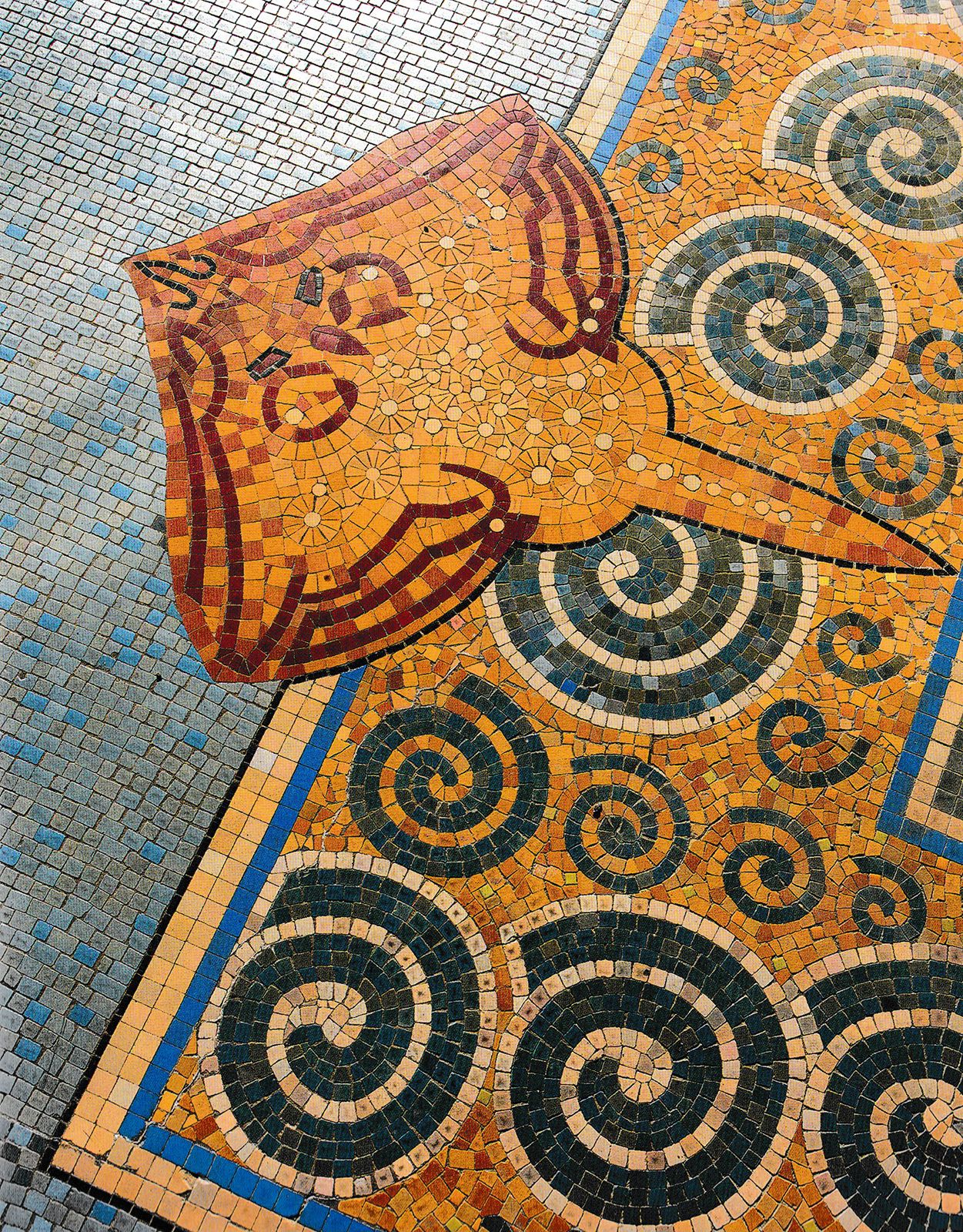
Villa le Caruhel – Etables sur mer.
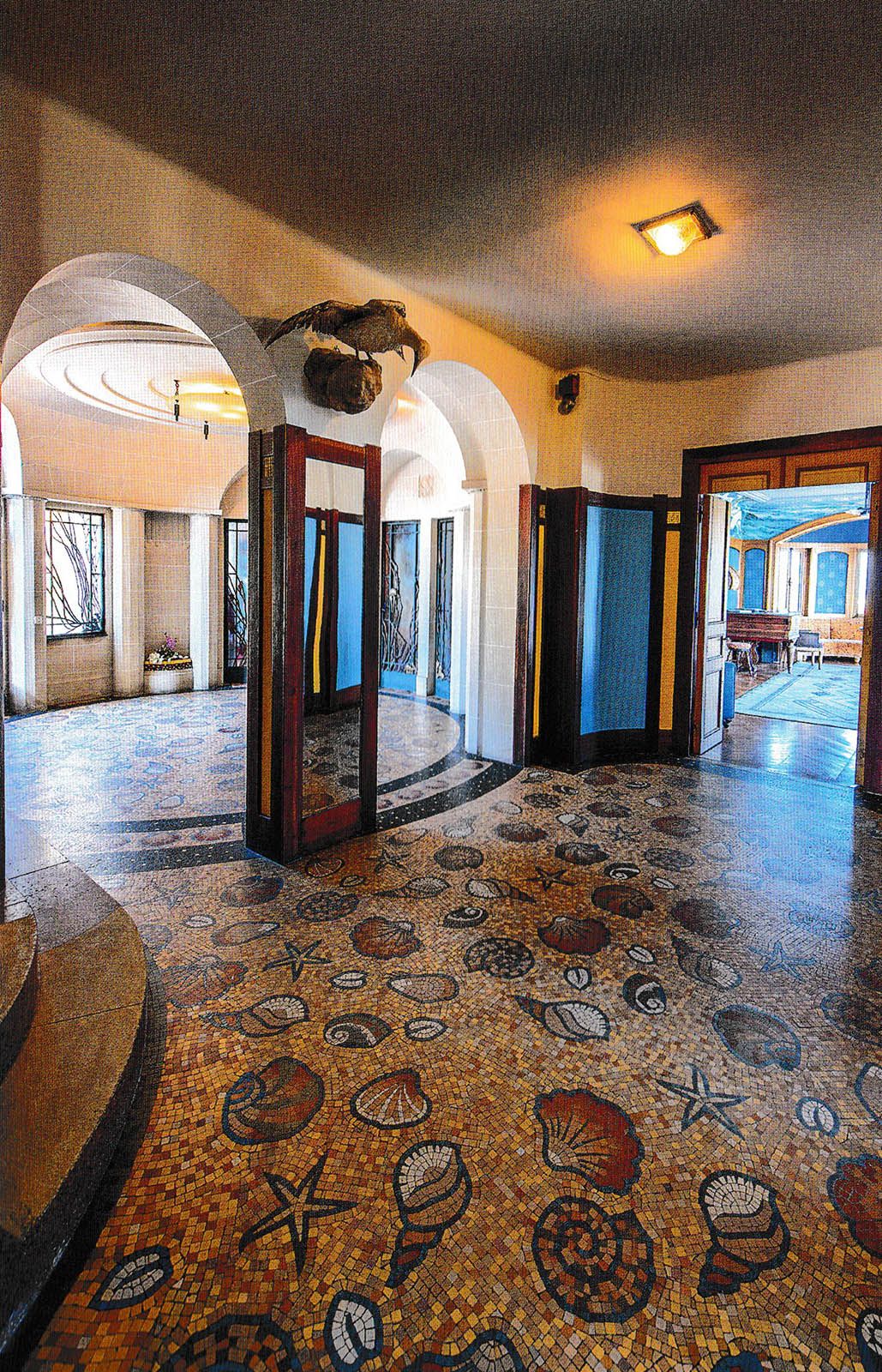
Villa le Caruhel – Etables sur mer.
Thus, the Odorico father and son will have embellished Villa Kermor and Villa Caruhel respectively, separated by just over 1km as the crow flies!
La plupart des éléments et images concernant Odorico sont extraites de l’ouvrage : « Odorico, l’art de la mosaïque » de Capucine Lemaître
Editions Ouest France – 2023.Photographies de Hervé Ronné.

